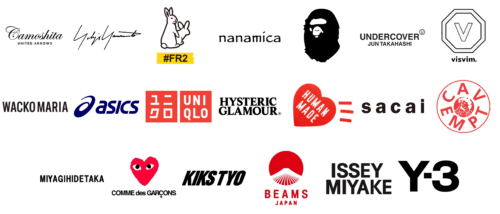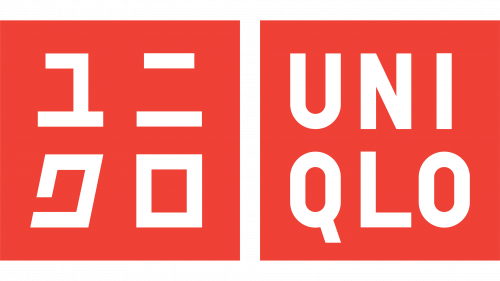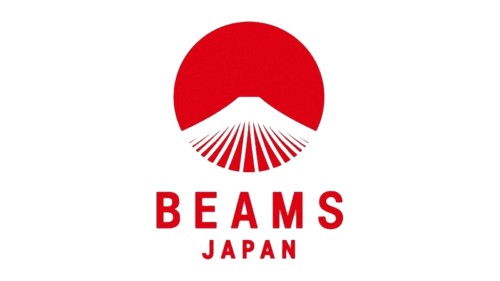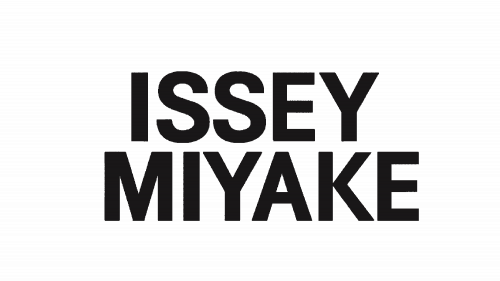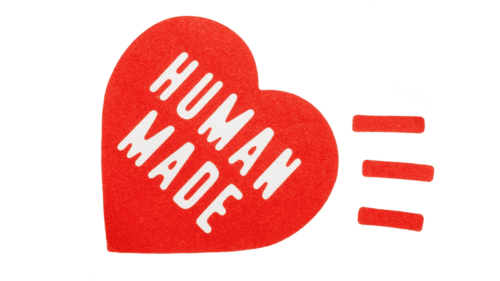Despite the fact that the fashion industry is primarily associated with European countries such as France and Italy, Japanese designers also occupy leading positions in the world ratings. Japan is a country of special style and elegant restraint. Today we are going to look at the logos of the twenty most outstanding Japanese fashion brands and appreciate Asian minimalism in all its glory. All the brands below are arranged in random order, so just enjoy the beautiful pictures without any ratings and rankings.
Comme des Garçons
Despite its French name, Comme des Garçons is one of the most recognizable Japanese brands. It was founded by designer Rei Kawakubo in 1969. The brand is known for its colorful irregularly shaped heart patches, which are also the main part of the label’s logo. The hearts can be depicted in either red or black colors. Comme des Garçons is also recognizable for its use of polka dot prints and striped fabrics, especially in t-shirts and leather accessories.
BAPE (A Bathing Ape)
Another very famous Japanese brand is BAPE. It is focused on streetwear style and is familiar to many young fashionistas from all over the world. The brand was founded in 1993 and by 1998 BAPE was already present in about 40 locations all over the country. Being a well-known fan of 20th-century pop culture, the company’s founder, designer NIGO, named his brand after the movie Planet of the Apes. The logo is also based on the movie’s motifs.
FR2 (Fxxking Rabbits)
Fxxking Rabbits is a lesser-known but no less conceptual brand from Japan. FR2 was created more as a provocation, as a bold statement in the streetwear fashion industry. The bold name sets the tone for all the company’s products and explains the rabbits chosen as the main symbol. Rabbits are everywhere – on the logo, on the products, in the inscriptions. Today the brand is very popular not only in Japan, but all over the world, and it makes collaborations with world giant brands.
Uniqlo
Uniqlo is a cool Japanese mass-market label with items of minimalistic design and colors, but excellent quality. The red-and-white logo of this brand can be found today in all major cities of the world, and the number of Uniqlo fans is counted in millions. The name appeared quite by chance. The company planned to combine the two words unique and clothing to get Uniclo. But as a result of a mistake made during registration, the brand turned into Uniqlo
BEAMS
BEAMS was founded in 1976 by a man named Etsuzo Shitara, who was inspired by the American street style. In 1978, shortly after opening a second store in the Shibuya neighborhood, one of the first offshoots of the BEAMS brand was launched – BEAMS F. Where “F” stands for the word Future. To this day, the brand and its logo are still associated with a progressive approach to fashion. Despite all the successes, BEAMS focused exclusively on the domestic market until recently.
Issey Miyake
Issey Miyake is more than a brand, it’s an icon in the world of fashion. The designer was one of the first to go beyond the usual design of clothes that fully replicate the shape of the body. The brand is known for its special recognizable architecture and unique style. Today Issey Miyake is not only men’s and women’s clothing, but also accessories and perfume. The logo of the brand is very minimalistic, as well as the main approach of the designer.
Yohji Yamamoto
Another loud and iconic name in Japanese fashion is, of course, Yohji Yamamoto. Known for its unique vision of shapes and love of black fabrics, this brand has conquered the hearts of all the most stylish people from all over the globe. Yohji Yamamoto is on top of the fashion world. The logo of this luxury extravagant brand depicts the signature of its founder, written in monochrome and sometimes accompanied by a thin circular framing.
Sacai
Sacai is a relatively young Japanese fashion brand that quickly exploded in the industry. The brand was founded in 1999 by Japanese designer Chitose Abe. Sacai reflects on the classics, reinterprets, and combines traditional styles and contrasting materials. In contrast to the shapes and textures in the brand’s clothing and accessories, the Sacai logo is extremely minimalist. It consists of a lowercase wordmark executed in the black-and-white palette.
Hysteric Glamour
Hysteric Glamour is an authentic Japanese brand founded in the mid-1980s and known for its obscene slogans, classic American silhouettes, and colorful graphics. Hysteric Glamour is above the classic understanding of fashion, it is more of a countercultural phenomenon. The logo of the brand looks very old-schoolish, despite its minimalism, which perfectly reflects the essence of its philosophy.
Visvim
Visvim is another cool Japanese clothing brand founded by designer Hiroki Nakamura in 2001. The brand is known for its simple casual wear with a great use of denim. The name “Visvim” does not have any special meaning. Designer Hiroki Nakamura supposedly thought of the name while studying a Latin dictionary where he came across the words “vis” and “vim”. The words were next to each other and both began with v – he simply combined them into a single word.
Miyagi Hidetaka
This brand is primarily known for its colorful, down-to-earth prints. Miyagi Hidetaka started his design career at Mythography, a shoe brand founded in 2012. In 2016, his favorite paisley print was put on his shoes for the first time. Starting with sandals and shoes, the MIYAGIHIDETAKA brand applies the bandana print to down jackets, pants, vests, shirts, and everything in between. This label is one of the least known outside Japan, but one of the most interesting.
Undercover
Undercover is the brand of Jun Takahashi, one of Japan’s iconic designers. Jun made luxury streetwear before it was even defined as such, literally becoming the originator of this style. Today Undercover is an iconic brand, known all over the globe, and its minimalistic logo with an underlined letter “U” and the complete name of the label, looks extremely progressive and super chic.
KIKS TYO
KiksTyo was created by a famous Japanese DJ and designer nicknamed hobby:tech. The concept of the brand was based on large logos and prints with semi-nude girls. This brand is not very famous outside Japan, but in its home country Kiks TYO, founded in 2006, is incredibly popular among young people. It’s even called “the iconic brand for sneakerheads”.
Wacko Maria
Wacko Maria is another designer label from Tokyo. It was founded in 2005. The founder of the brand is Atsushiko Mori, a former soccer player. He played as a goalkeeper for the Japanese team Yokohama Flugels. Brand’s style is a timeless party. Bright prints and screaming materials are what Wacko Maria has used to gain its position in the global fashion market. Despite its colorful approach to fashion, the brand uses a super laconic monochromatic logo with just the lettering in sans-serif.
Cav Empt
Japanese brand Cav Empt was founded in 2011, during this time the brand managed to gain a real army of fans among true connoisseurs of streetwear style. It was founded by young designers Feltwell, Hisiyamu Yutaka, and SK8THING. The Cav Empt brand got its name from the Latin legal term “caveat emptor” (lit. let the buyer beware). The logo of the brand is set in red and white, with a circle as the main shape and a funny pin-up portrait in the center.
Human Made
HUMAN MADE is a brand created by Japanese designer Nigo amidst a 30-year passion for vintage and antiques. The name refers to the designer’s creative journey, symbolizing the “evolution” from monkey to human. Human Made is sensible and comfortable aesthetic clothing. The brand is inspired by American casual workwear and prioritizes attention to detail. The brand’s lifestyle is based entirely on Nigo’s personal collection of popular culture.
Camoshita
Camoshita’s clothing is handmade in Japan, but has its roots in the Ivy League squares and free tailoring of Southern Italy. Born out of Japan’s favorite retailer United Arrows, founder Yasuto Camoshita’s eponymous brand reflects his unique perspective as a designer who is considered a style icon not only in his home country but far beyond. Camoshita is all about modern elegance and modesty.
Y-3
The Y-3 brand was born from the collaboration of two legends. Y-3 is at the intersection of high and street fashion thanks to the singular vision of avant-garde designer Yohji Yamamoto, who has long been reinterpreting Adidas‘ sporty silhouettes. Today the brand has become iconic all around the globe and its sneakers and joggers are must-haves in the wardrobes of all fashionistas. The minimalistic yet bold logo of Y-3 fully explains the essence of the brand.
Nanamica
Nanamica, established in 2003, is a lesser-known Japanese fashion brand. In translation from Japanese, the brand name means “home of the seven seas”, which, according to Nanamica’s founder Eiichiro Homma, reflects his desire for an active life full of adventure. The brand’s collections combine functional technical clothing at the intersection of classics and sports.
ASICS
ASICS is a manufacturer of professional sports equipment from Japan, founded in 1949 in the city of Kobe. Today, ASICS produces sports goods for almost all disciplines, and reissues iconic models from the archives under the Onitsuka Tiger brand, which is now very popular around the world. The logo of ASICS is a very elegant depiction of athletics, represented in simple shapes with motion fluidity.
Conclusion
In the intricate tapestry of the fashion world, Japanese fashion brands have carved out a distinct and indelible niche that marries the meticulous artistry of traditional craftsmanship with the pulsating energy of modern aesthetics. Central to this fusion is the reverence for garments that not only push the boundaries of design but also prioritize comfort, ensuring that each piece is as wearable as it is visually compelling. At the heart of this sartorial revolution are the popular Japanese fashion brands, whose logos have become symbols of quality, innovation, and cultural synthesis.
The global fascination with Japanese streetwear, in particular, underscores a broader trend towards apparel that combines functionality with cutting-edge style. As a streetwear brand, the impact of Japanese labels has been profound, influencing not just local fashionistas but also shaping trends on the international stage, including the revered runways of Paris Fashion Week. This global appeal is a testament to the unique blend of influences that these brands bring to the table, from the meticulous attention to detail of Japanese denim brands to the bold, experimental visions that redefine what streetwear can be.
Japanese denim brands, in particular, have earned a special place in the pantheon of fashion, celebrated for their dedication to quality, sustainability, and the art of jeans-making. This commitment has positioned Japanese denim as a valuable brand in its own right, sought after by connoisseurs and casual wearers alike for its unparalleled quality and timeless appeal.
Moreover, collaborations between Japanese labels and giants of the fashion industry, such as Louis Vuitton, have further cemented the global influence of Japanese fashion. These partnerships are not just a melding of east and west but a celebration of mutual respect and creativity, showcasing the versatility and global reach of Japanese fashion brands.
In conclusion, the logos of Japanese fashion brands stand as emblems of a rich cultural heritage, innovative design, and a forward-thinking approach to fashion. From the urban streets of Tokyo to the high-fashion catwalks of Paris Fashion Week, these brands continue to redefine the boundaries of style, comfort, and artistic expression. As they evolve, they not only represent the pinnacle of Japanese craftsmanship but also a global movement towards a more inclusive, innovative, and interconnected fashion landscape.


